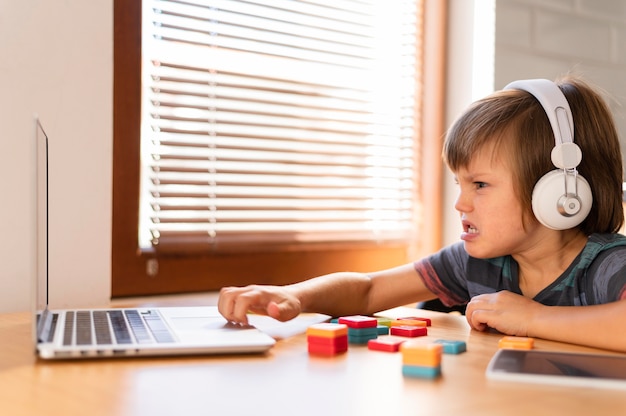Balancing Screen Time with Hands-On Learning
Balancing Screen Time with Hands-On Learning: A Guide for Early Childhood Educators
In today’s tech-saturated world, screen time is a constant presence in children’s lives. From tablets and smartboards to educational apps and videos, digital media is more accessible than ever—even in #early-childhood settings.
While technology can be a powerful educational tool, it's essential to balance it with hands-on learning experiences that promote physical, cognitive, and emotional #development. At ChildCareEd.com, we believe that early #educators #play a critical role in setting #healthy boundaries and cultivating #developmentally-appropriate-practices around screen use.
In this article, we’ll explore the benefits and drawbacks of screen time, and how to intentionally balance it with rich, hands-on learning—plus we’ll highlight courses that can support you in implementing effective strategies.
🎥 The Reality of Screen Time in Early Childhood
Screens are not inherently harmful—but how and how often they are used makes all the difference.
According to the American Academy of Pediatrics:
-
Children under 18 months should avoid screen time (except for video chatting).
-
Children ages 2–5 should be limited to one hour of high-quality content per day, co-viewed with an adult.
-
Older children benefit from having consistent limits and screen- #free time built into their day.
The problem arises when passive screen use replaces active, experiential learning—a cornerstone of child development in the early years.
💡 Learn more in our course:
Technology and Media Use in Early Childhood Education
🧠 Why Hands-On Learning Matters
Children learn best by doing. Engaging the senses—touch, smell, sound, sight, and movement—stimulates deeper learning, problem-solving, and brain development. Hands-on learning helps children:
-
Develop fine and #gross-motor-skills
-
Strengthen creativity and critical thinking
-
Build social-emotional connections through collaborative play
-
Retain knowledge through experiential memory
Whether it’s molding clay, building with blocks, planting seeds, or painting with their fingers, these tactile experiences are irreplaceable by screens.
✋ Try this course for ideas:
Sensory Play and Child Development
⚖️ Strategies for Balancing Screen Time and Hands-On Learning
As educators, the goal isn’t to eliminate technology—but to use it intentionally, while emphasizing interactive, screen-free activities. Here are a few practical strategies:
Set a Screen Time Schedule
Establish a consistent time for digital activities, such as a short educational video or digital storytime, followed by a hands-on experience related to the topic.
Co-View and Engage
Avoid passive screen time. Watch or play along with children, ask open-ended questions, and encourage discussion. Make it interactive and relational.
🎓 Enhance your approach with:
Active Supervision and Intentional Engagement
Offer Real-World Alternatives
If a digital game teaches sorting by color or shape, follow it with a physical game using blocks, buttons, or other manipulatives.
Design Screen-Free Zones
Create cozy corners, #sensory tables, and #outdoor #classrooms that are completely tech-free. These environments invite unstructured play and exploration.
Model Mindful Use
Children take cues from adults. Model how and when technology is used thoughtfully, and take breaks together to reset and reconnect.
🏡 Partnering with Families on Screen Time
The #home environment often includes more screen exposure than school. Educators can support families by:
-
Sharing screen time guidelines
-
Recommending high-quality, educational content
-
Encouraging family routines like tech-free meals and #outdoor-play
📘 Want to communicate better with families?
Check out: Positive Communication with Families
🌱 Create a Well-Rounded Learning Environment
At ChildCareEd, we help educators develop the skills to design learning environments that blend innovation with tradition, and screen time with sensory-rich experiences.
Consider taking our professional development courses to build your confidence in managing media and maximizing learning through play:
🔗 Featured Courses:
✨ Final Thoughts
Technology is here to stay, but early childhood education must remain hands-on, child-centered, and play-driven. By finding the right balance between screen time and experiential learning, we can ensure children thrive in all areas of development.
Let ChildCareEd.com be your partner in navigating this balance. With dozens of self-paced, affordable, and CEU-eligible courses, we help educators create environments where children can explore, play, and grow—on and off the screen.
- Balance Act: Teacher & Child ONLINE
- Balancing Active Play in Child Care
- Balancing Act: Record Keeping & Supervision
- Balancing Act: Schedules and Routines
- CDA: Approaches to Learning
- CDA Infants/Toddlers: Individualized Learning and Inclusion
- Developmental Screening in Early Childhood
- Early Learning with Infants and Toddlers
- Emergent Learning & Development
- Injury Prevention: Their Safety Is In Your Hands
- Balancing Screen Time with Hands-On Learning
- Incorporating Technology in Childcare: Balancing Screen Time and Hands-On Activities
- Dopamine Drama: Why Your Kid's Brain Treats Screen Time Like a Roller Coaster
- From Marshmallows to Mastery: Hands-On Learning for Early Childhood
- The Montessori Time Machine: Transporting Kids Back to Simpler Times
- Building a Back-to-School Routine: Balancing Homework, Extracurriculars, and Family Time
- 10 Fine Motor Activities to Keep Tiny Hands Warm this Winter
- Nurturing Hearts and Minds: The Critical Role of Social-Emotional Learning in Early Childhood
- Tiny Tots, Big Learning: Crafting Curriculums for the Littlest Learners!
- Tummy Time Travelers: How to Send Your Kid’s Gut on a Yummy Health Journey
- Essential Training for Preschool Teachers: Building a Safe and Nurturing Learning Environment
- Integrate Technology in a Way that Supports Learning without Overwhelming
- Creating the Montessori Prepared Environment: A Cornerstone of Learning
- Childhood Education in Georgia: A Growing Focus on Quality Learning
- Wobble Boards and Balance Beams: How Physical Movement Supports Somatic Healing in children
- The Thankfulness Tree: A Fun, Hands-On Thanksgiving Activity for Little Learner
- Laugh, Learn, and Lift Spirits: Stress-Busting Tips for Early Childhood Educators
- Nature’s Classroom: Why Fall Is the Best Season for Sensory Learning Outdoors
- Balancing Routine and Flexibility: Creating a Structured Yet Adaptable Schedule for Children
- Hungry for Play: The Power of Play-Based Learning in Early Education
